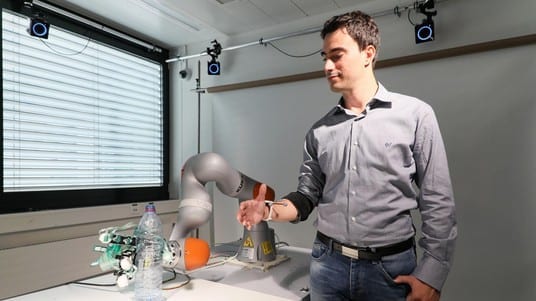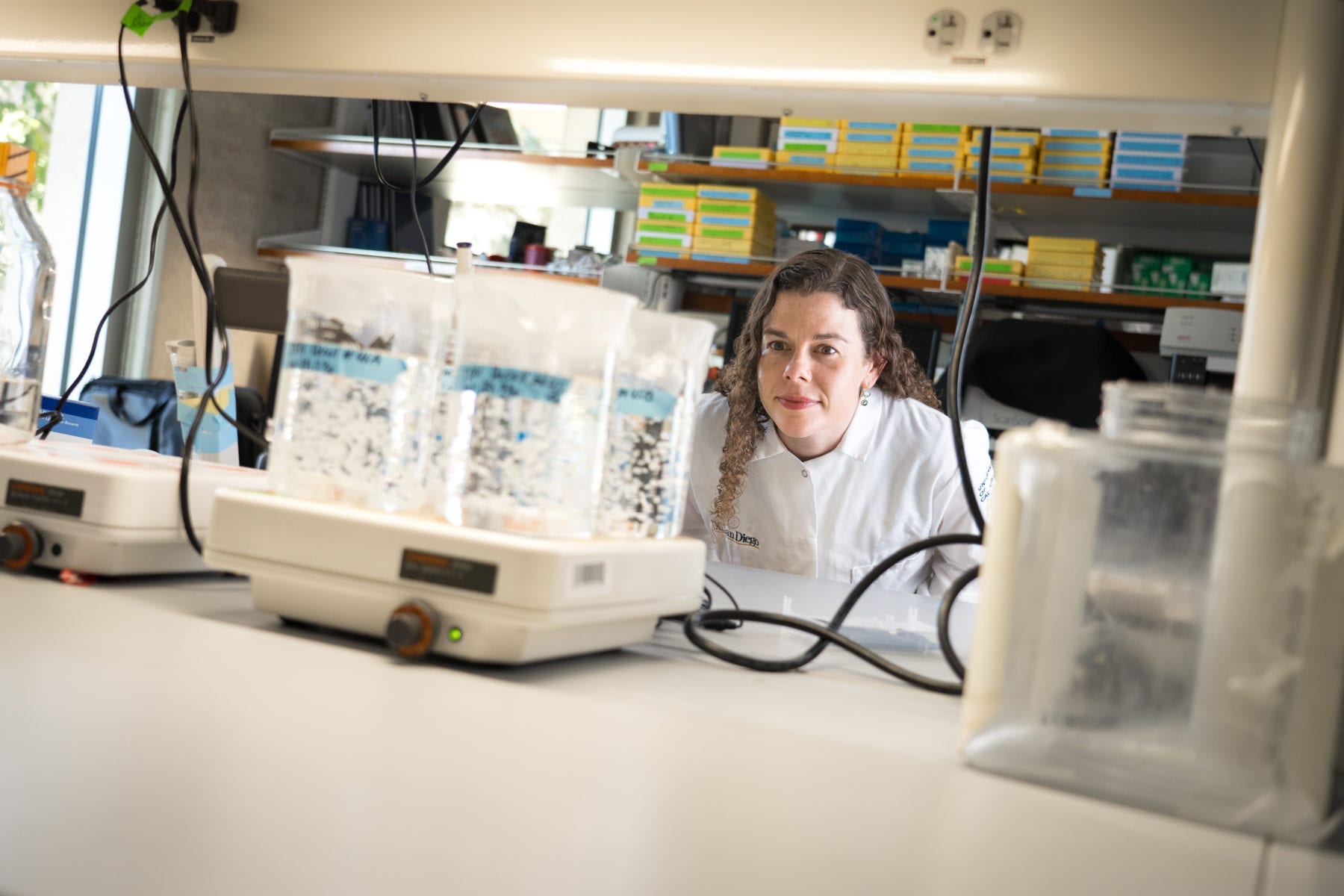
EPFL scientists have successfully tested new neuroprosthetic technology that combines robotic control with users’ voluntary control, opening avenues in the new interdisciplinary field of shared control for neuroprosthetic technologies.
EPFL scientists are developing new approaches for improved control of robotic hands – in particular for amputees – that combines individual finger control and automation for improved grasping and manipulation. This interdisciplinary proof-of-concept between neuroengineering and robotics was successfully tested on three amputees and seven healthy subjects. The results are published in today’s issue of Nature Machine Intelligence.
The technology merges two concepts from two different fields. Implementing them both together had never been done before for robotic hand control, and contributes to the emerging field of shared control in neuroprosthetics.
One concept, from neuroengineering, involves deciphering intended finger movement from muscular activity on the amputee’s stump for individual finger control of the prosthetic hand which has never before been done. The other, from robotics, allows the robotic hand to help take hold of objects and maintain contact with them for robust grasping.
“When you hold an object in your hand, and it starts to slip, you only have a couple of milliseconds to react,” explains Aude Billard who leads EPFL’s Learning Algorithms and Systems Laboratory. “The robotic hand has the ability to react within 400 milliseconds. Equipped with pressure sensors all along the fingers, it can react and stabilize the object before the brain can actually perceive that the object is slipping. ”
How shared control works
The algorithm first learns how to decode user intention and translates this into finger movement of the prosthetic hand. The amputee must perform a series of hand movements in order to train the algorithm that uses machine learning. Sensors placed on the amputee’s stump detect muscular activity, and the algorithm learns which hand movements correspond to which patterns of muscular activity. Once the user’s intended finger movements are understood, this information can be used to control individual fingers of the prosthetic hand.
“Because muscle signals can be noisy, we need a machine learning algorithm that extracts meaningful activity from those muscles and interprets them into movements,” says Katie Zhuang first author of the publication.
Next, the scientists engineered the algorithm so that robotic automation kicks in when the user tries to grasp an object. The algorithm tells the prosthetic hand to close its fingers when an object is in contact with sensors on the surface of the prosthetic hand. This automatic grasping is an adaptation from a previous study for robotic arms designed to deduce the shape of objects and grasp them based on tactile information alone, without the help of visual signals.
Many challenges remain to engineer the algorithm before it can be implemented in a commercially available prosthetic hand for amputees. For now, the algorithm is still being tested on a robot provided by an external party.
“Our shared approach to control robotic hands could be used in several neuroprosthetic applications such as bionic hand prostheses and brain-to-machine interfaces, increasing the clinical impact and usability of these devices,” says Silvestro Micera, EPFL’s Bertarelli Foundation Chair in Translational Neuroengineering, and Professor of Bioelectronics at Scuola Superiore Sant’Anna in Italy.
Learn more: A smart artificial hand for amputees merges user and robotic control
The Latest on: Neuroprosthetic technology
[google_news title=”” keyword=”neuroprosthetic technology” num_posts=”10″ blurb_length=”0″ show_thumb=”left”]
via Google News
The Latest on: Neuroprosthetic technology
- MIT Technology Reviewon May 4, 2024 at 3:06 am
Our editors picked the 50 companies that are smartest about how they combine innovative technology with an effective business model. Some are new companies and startups, while others have ...
- Fontana High School teams get honors in national REACH Challengeon May 3, 2024 at 8:59 pm
Two teams reached the semifinals for the adaptive devices they designed, and a third team got special recognition.
- Technology and future of prosthetics focus of conference this weekend in Waterloo regionon May 3, 2024 at 10:29 am
Technology around prosthetic limbs is getting more sophisticated. New innovations and the future of the industry will be part of a conference happening in Waterloo region Friday and Saturday.
- Technology Newson May 2, 2024 at 6:12 pm
New York Gov. Kathy Hochul says she regrets making an offhand remark that suggested Black children in the Bronx do not know what the word “computer” means Federal safety investigators want ...
- 10 Best Technology Mutual Funds Of May 2024on May 2, 2024 at 4:03 am
Commissions do not affect our editors' opinions or evaluations. Over the past 10 years, the technology sector has enjoyed stratospheric performance. You can’t even match the tech funds category ...
- Technology and the Interneton April 29, 2024 at 5:00 pm
An experimental F-16 fighter jet took the U.S. Air Force secretary on a history-making flight controlled by artificial intelligence and not a human pilot.
- Technologyon April 29, 2024 at 5:00 pm
May 3, 2024 • Wildlife ecologists have seen white-tailed deer expanding their range in North America over many decades. And since the early-2000s these deer have moved north into the boreal ...
- Technology Insight: Future Neuroprosthetic Therapies for Disorders of the Nervous Systemon April 20, 2024 at 5:00 pm
The neuroprosthetic approach to restoring these lost functions is based on arrays of microelectrodes implanted into neural tissues, which can 'talk' and 'listen' to large numbers of small groups ...
- Boosting the brain's control of prosthetic devices by tapping the cerebellumon April 15, 2024 at 10:17 am
"There is a lot of buzz about neuroprosthetic technology, but there are still many unsolved problems," Underhill said. "This study suggests that some of those could be resolved by involving the ...
- Technology Insight: Future Neuroprosthetic Therapies for Disorders of the Nervous Systemon April 9, 2024 at 5:00 pm
Nat Clin Pract Neurol. 2007;3(8):444-452. Another requirement for dexterous control of a biological or prosthetic arm and hand is sensory feedback. Graceful, intuitive control of a hand cannot be ...
via Bing News










